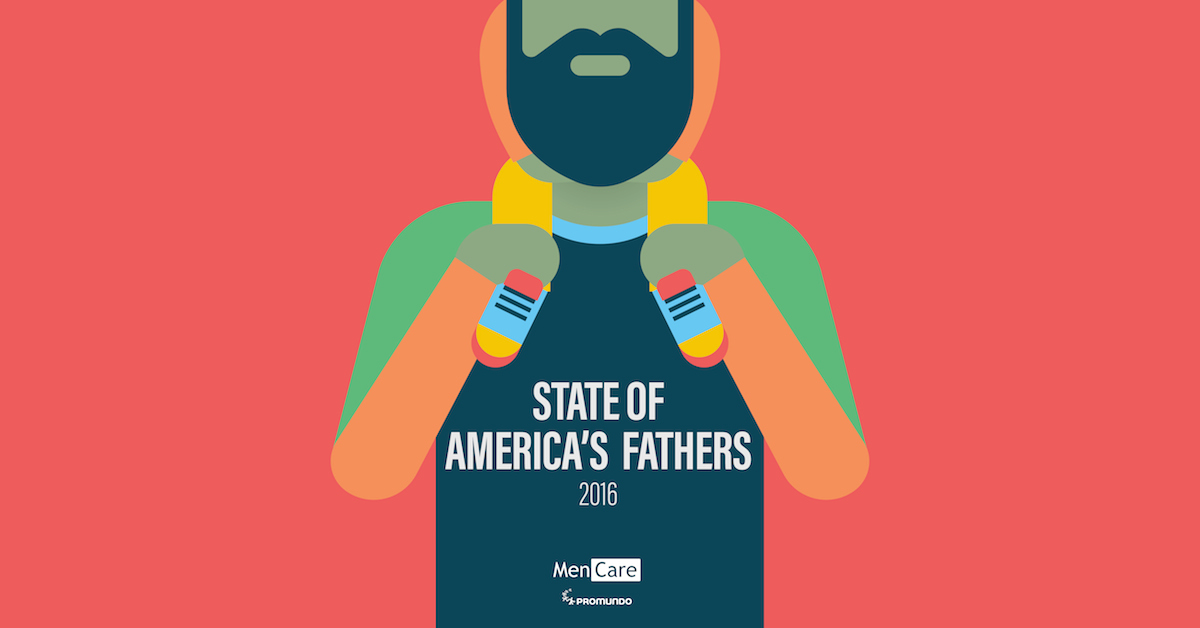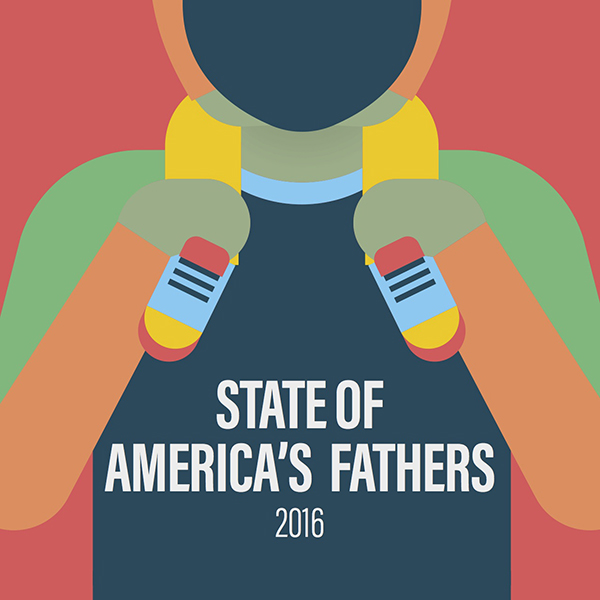
By Gary Barker and Michael Kimmel
Originally posted on Fast Company
A new study finds men have nearly tripled the amount of time they spend on child care, but women still do twice their fair share.
Fatherhood is in the news, whether it’s high-profile dads or renewed pushes for paid leave in the District of Columbia, New York City, and beyond.
For those of us urging equality between men and women in the workplace, the discussion is rightly focusing on whether men are, should be, or even can do half of the daily caring for children and housework. But elsewhere, in our court system, custody wars continue, and state child-welfare systems spend millions getting nonresident fathers to pay child support. That leads to a lot of strong opinions about fathers and modern fatherhood. But what’s really happening?
Fathers are doing more, but still much less than mothers
It’s true that involved fatherhood has become the norm in the United States. The main driver of the change is that we are now a nation of dual-career/dual-carer couples. The release this week of our new study, State of America’s Fathers 2016, illustrates this shift. More than 60% of Americans are in dual-income households, while only 20% live off only one income.
Over the past 30 years, American fathers have increased the time they spend with their children during the workday by 65% on average. According to our study’s data analysis, nearly half (48%) of currently partnered American fathers now self-identify as either sharing responsibility with their partners or as their children’s primary caregiver.
However, while fathers have nearly tripled their time on child care (from two and a half to seven hours a week) and more than doubled their time on housework (from four to 10 hours weekly) between 1965 and 2011, mothers are still spending twice as much time on child care as fathers are (an increase in women’s total time on child care from 1965) and significantly more time on housework.
So, yes, fathers are doing more, particularly when it comes to the hands-on care of children—but it’s too soon to proclaim equality when it comes to doing the dishes, changing the diapers, cleaning the toilets, and all the not-so-fun things that help keep a household in order.
Being a stay-at-home dad isn’t just a trendy lifestyle choice
There are nearly 2 million men in the U.S. who are full-time, stay-at-home-dads; that’s an increase from exactly six men in the 1970s. More than a trendy thing to do, it is a necessity for many households.
In a national survey of stay-at-home dads, 23% said they stayed home with their children because they were unable to find work. Stay-at-home dads are half as likely to have a high school diploma as working fathers, and almost half of stay-at-home dads are living in poverty.
For many households, fathers are now staying at home for the same reasons mothers do. Sure, there are some fathers out there who stay at home out of choice. But for most, it’s a pragmatic decision—families doing whatever it takes to get by economically, and to pursue dual careers.
A lack of sufficient paid leave hurts working dads, too
Only 40% of American workers are eligible for leave under the Family Medical Leave Act, and that’s for unpaid leave. Far from adequate, unpaid leave for many workers often means no leave at all—and families suffer as a result.
Among the lowest-paid workers in the U.S., 95% have no access to any leave, paid or unpaid. The U.S. is the only wealthy nation in the world that offers no paid leave for mothers or fathers.
In the absence of an adequate national policy on paid leave, a few states and cities are passing legislation, with California and New York City leading the way. The District of Columbia is moving on legislation to offer 16 weeks’ paid leave (with a ceiling for salary replacement).
The Family and Medical Insurance Leave Act (FAMILY Act), currently sponsored in Congress by Senator Kirsten Gillibrand of New York, would provide up to 12 weeks of paid leave each year to workers who will be eligible to collect up to 66% of their typical monthly wages. The bill has the potential to provide relief to the 40% of American workers who have no job-protected leave.
States like California that offer some paid leave are strong proof of its benefits. Eighty-seven percent of low-wage workers who took leave under the new California Paid Family Leave program reported that the leave had a positive effect on their ability to care for their children or family. Shorter leave allotments for fathers, on the other hand, are associated with increased marital dissatisfaction, depression, and anxiety.
Some businesses argue that mandating them to offer paid leave is too costly; other employers say they want to offer parental leave on their own terms when they’re ready. But evidence shows that when it’s offered to everyone, it’s affordable—and fair. The states and cities (and highly competitive countries) that offer up to 16 weeks of paid leave for both fathers and mothers have been able to achieve it for a payroll tax of about 1%.
In the meantime, families are not just making it on their own in the absence of adequate leave. And while we should applaud employers that do offer it voluntarily, we’ll only offer relief for all parents when it’s part of a national policyor is offered everywhere through city- and state-mandated programs.
Fathers who don’t pay child support aren’t exactly “deadbeat dads”
Most “deadbeat dads” are actually dead-broke dads, as Columbia University’s Ron Mincy has found. Approximately 71% of the country’s much-maligned nonresident fathers earn no more than $40,000 per year, and fathers with incomes under $20,000 are those with the highest child-support arrears.
Most can’t pay because of a combination of unemployment, economic challenges, and incarceration. In many low- and middle-income families, parents are working two or more jobs to get by. Add to that the nearly 2 million children in the U.S. who have an incarcerated, nonresident father.
Research finds that the vast majority of nonresident fathers are regularly involved with their children; that mothers value nonresident fathers’ caregiving as much as they value financial contributions; and that unrealistic child-support payment requirements can cause more harm than good. Given the overwhelming evidence that father involvement is positive, even when fathers live away from their children, it’s clear that supporting low-income, nonresident fathers is more effective than punishing them.
Dads are just as effective caregivers as moms
Some may not want to accept this one, but apart from giving birth and breastfeeding, men can care for children every bit as much and as well as women.
Research has long demonstrated that women’s body chemistry changes when they give birth, priming them physiologically for bonding with their children. Newer research finds that primary-caregiving fathers display similar neural-network and brain-hormone changes that facilitate bonding with their infants.
Years of observational research in child development has found no discernible biologically based differences between women and men in their capacity to care for children or their sensitivity to infants. Fathers’ responsiveness to children is learned. Just like mothers, the more they do it, the better they get.
Anthropologist Sarah B. Hrdy, who has studied caregiving across cultures, species, and humans’ evolutionary development, refers to this as “primability”—the notion that many kinds of caregivers (mothers, fathers, grandmothers, aunts, and even siblings) are primed to provide care for infants. Men—dads, grandparents, uncles, and lots of others—can do as much of the caregiving as mothers, and do it well, if we only encourage and teach them how.
